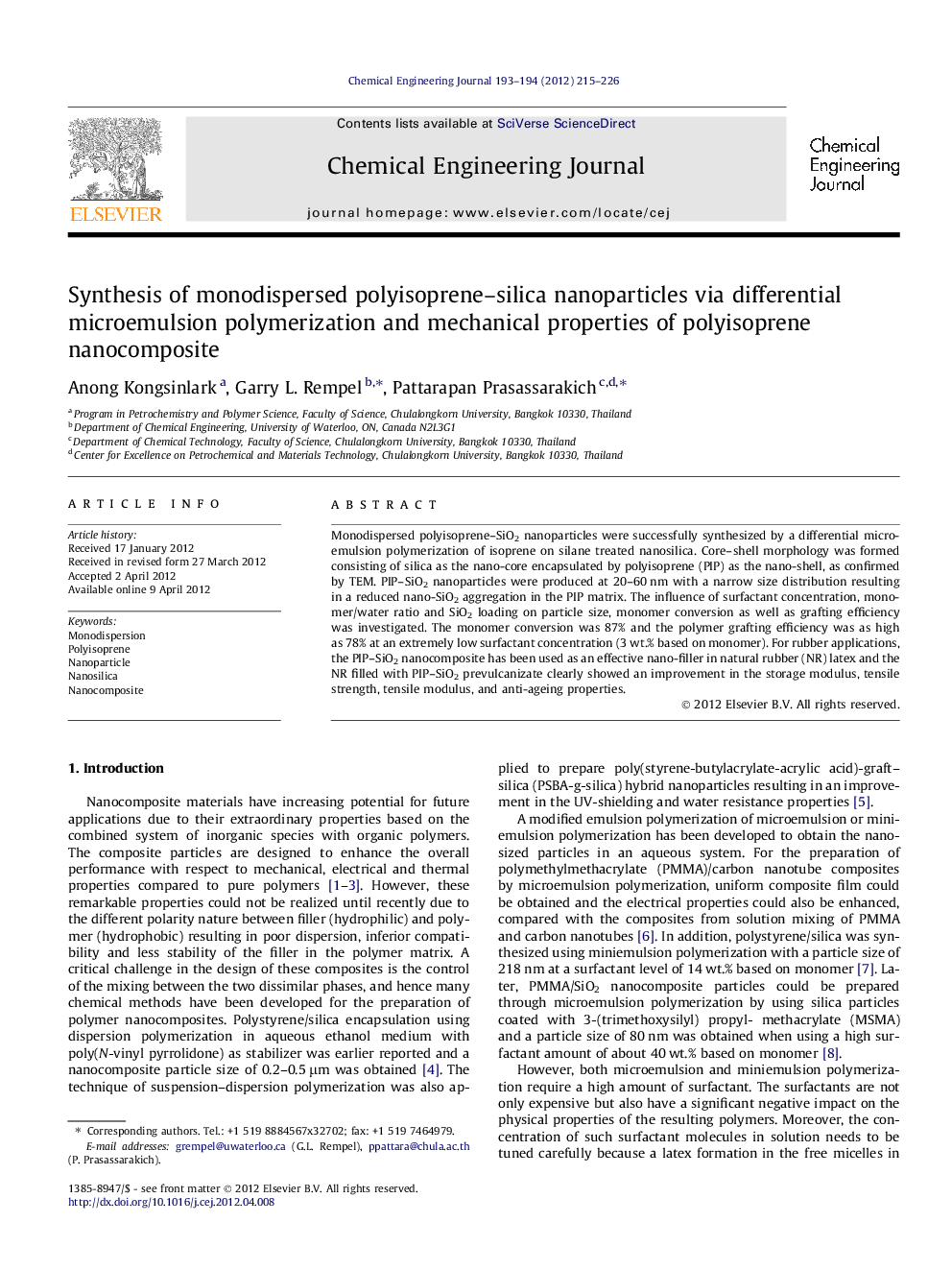| Article ID | Journal | Published Year | Pages | File Type |
|---|---|---|---|---|
| 149875 | Chemical Engineering Journal | 2012 | 12 Pages |
Monodispersed polyisoprene–SiO2 nanoparticles were successfully synthesized by a differential microemulsion polymerization of isoprene on silane treated nanosilica. Core–shell morphology was formed consisting of silica as the nano-core encapsulated by polyisoprene (PIP) as the nano-shell, as confirmed by TEM. PIP–SiO2 nanoparticles were produced at 20–60 nm with a narrow size distribution resulting in a reduced nano-SiO2 aggregation in the PIP matrix. The influence of surfactant concentration, monomer/water ratio and SiO2 loading on particle size, monomer conversion as well as grafting efficiency was investigated. The monomer conversion was 87% and the polymer grafting efficiency was as high as 78% at an extremely low surfactant concentration (3 wt.% based on monomer). For rubber applications, the PIP–SiO2 nanocomposite has been used as an effective nano-filler in natural rubber (NR) latex and the NR filled with PIP–SiO2 prevulcanizate clearly showed an improvement in the storage modulus, tensile strength, tensile modulus, and anti-ageing properties.
Graphical abstractFigure optionsDownload full-size imageDownload as PowerPoint slideHighlights► Polyisoprene (PIP)–SiO2 was synthesized via differential microemulsion polymerization. ► PIP–SiO2 nanoparticles were produced at 20–60 nm with a narrow size distribution. ► Core–shell morphology of nano-SiO2 encapsulated with nanosized PIP was achieved. ► Synthetic PIP–SiO2 could be used as novel reinforcing nanofiller in natural rubber. ► PIP–SiO2 filled NR had high mechanical properties and excellent thermal stability.
